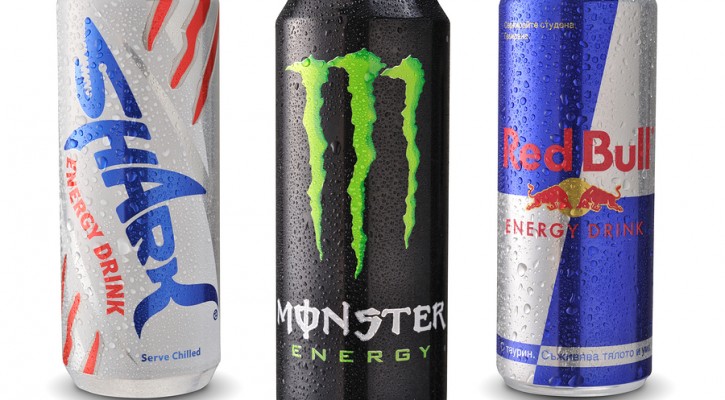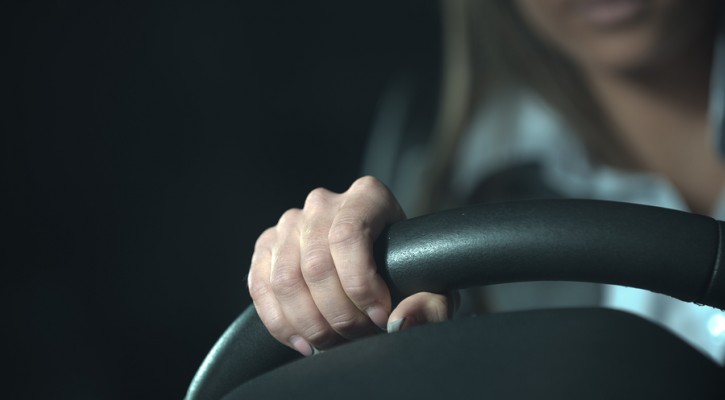Category Archive: Parents

IIHS Updates List Of Safest Used Cars For Teens
October 9, 2015
The Insurance Institute for Highway Safety (IIHS) has updated their list of the safest used cars for teens and, with manufacturers creating more and more safer vehicles, the list is 50 percent larger than last year’s list.
The IIHS found last year that teens were more likely to drive cars that were smaller, older, and less safe than vehicles driven by their parent’s generation. To guide parents and teens toward safer vehicles, the IIHS published their first list of safest used cars for teens last year.
The criteria for choosing the safest used cars hasn’t changed. Those criteria are:
- Stay away from high horsepower vehicles. Teens don’t need to be tempted to test the limits.
- Larger, heavier vehicles offer more protection in a crash. Small, light vehicles such as smart cars and mini-coopers weren’t considered for the list.
- Electronic Stability Control (ESC) is required. ESC prevents over-correction and helps keep the car on the road in curves and on slippery roads. ESC is now mandatory in all vehicles built since 2012.
- Vehicles should have the best safety rating possible. Vehicles should score “good” ratings in moderate overlap front crash tests, acceptable ratings in side tests and receive four or five stars from the National Highway Transportation Safety Administration (NHTSA).
The safest used cars list is broken into two categories;
- Best Choices – Safest used cars under $20,000
- Good Choices – Safest used cars under $10,000
The IIHS based their price estimates on Kelly Blue Book values as of September 1st of this year.
Read More: Safe and affordable: updated used vehicle recommendations for teens

Dramatic Evidence That GDL Laws Work
July 30, 2015
More and more evidence has been coming in over the past few years that GDL (Graduated Driving License) laws work to save lives among teen drivers. Now the State of Connecticut has produced evidence that their GDL law has dramatically reduced the teen death rate in that state.
A report released in May of this year by the Connecticut DMV Center for Teen Safe Driving, credited Connecticut’s strict GDL laws for the fact that, in 2014;
- “For the first time in 12 years, no 16- or 17- year-old passengers died in a crash of a vehicle driven by another 16- or 17- year-old driver in Connecticut.”
- “There was only one death among the 16- or 17- year-old drivers who were governed by the state’s GDL program.”
That’s an incredible accomplishment!
In addition, a report published in 2011 by the Connecticut Children’s Medical Center, stated that Connecticut’s GDL law can be credited with a significant decrease in fatalities among novice teen drivers. It also said that, among the fatal crashes that did occur, half were caused by teen drivers who were in violation of Connecticut’s GDL law.
Prior to 1997, the state didn’t require teens to have a learner’s permit or any specific training requirements before applying for an operator’s license. In 1997, the state passed a law requiring a learner’s permit along with home training for six months or a four month driver’s education program before applying for an operator’s license. However, evidence showed that the new requirements did little to reduce the death rate among teen drivers.
In 2003, the state passed the first GDL laws that set curfew and passenger restrictions for teen drivers. Those laws took effect in 2004. In 2008, after a series of high-profile teen crashes, the state beefed up their GDL laws even more by further strengthening the curfew and passenger restrictions, increasing the requirements for training, and increasing penalties, including the nation’s first 48 hour license suspension for teens charged with any traffic violation. The state also required a two-hour joint parent-teen information session for any 16 or 17 year old applying for a license.
The state vigorously enforced the GDL laws among teen drivers and, ten years after the enactment of the first GDL laws in 2004, the results show:
- A 64 percent reduction in the deaths of 16 and 17 year-old drivers who are governed by the state’s GDL program.
- A 13 percent decline in the number of crashes for the 16 and 17 year-old age group in 2013 compared to the previous two years.
- The Children’s Medical Center report says credits the state’s GDL laws – not maturity, for the dramatic reduction in the teen driver death rate.
The Insurance Institute for Highway Safety lists Connecticut among the top states for effective GDL laws based on the permit age of 16 and the zero teen passenger restrictions.
If other states were to follow this model, the teen driving death rate could be reduced dramatically nationwide. Regardless of what their particular state law says, parents can increase the safety factor for their own teen by setting and enforcing their own strict GDL limits.
Read more: Teen Driver, Passenger Fatalities at Historic Lows, According to New DMV Report Released Today

Is The Florida Driving Test Too Hard?
July 20, 2015
Is the Florida driving test too hard? According to a story in the Tampa Bay Times, only 41 percent of test takers passed the test during the first six months of 2015.
Alarmed by one of the highest teen death rates in the nation, the Florida Department of Motor Vehicles and Highway Safety (DHSMV) decided to revamp the driving test for the first time in more than 20 years. Within a month of the introduction of the new exam, state officials were warning of an extremely high failure rate. Prior to the introduction of the new test, the failure rate was approximately 40 percent but after the new test was introduced, the failure rate rose to almost 70 percent statewide.
The old driving test actually consisted of two separate tests; a 20 question test on road signs and a 20 question test on road rules. The new test consists of a single 50 question test on both road rules and road signs. In order to pass, the test taker must answer 80 percent or more of the questions correctly.
Many are complaining that the new driving test has questions that are poorly worded, difficult to understand, or that have nothing to do with driving safety. Among the question examples in the Tampa Bay Times story was a question on how much it costs for a veteran to get a “V” designation on their driver’s license.
The driving test questions were created by a Nevada company called Solutions Thru Software. Some are complaining that the company has an incentive to make the test too hard because they receive a payment for each test taken through third party providers.
The state is trying to do a balancing act by creating a driving test that accurately gauges an applicant’s knowledge of driving laws while, at the same time, achieving a goal of a 70 percent passing rate. The state has changed or dropped some of the questions but, according to the DHSMV chief of staff Leslie Palmer, reaching a goal of a 70 percent passing rate may not be achievable this year.
The highest scoring county in Florida with 1000 tests taken is St. Johns County with a 57 percent passing rate. The lowest scoring county with 1000 tests taken is Nassau County with just a 32 percent passing rate.
What hasn’t changed is the need for future drivers to thoroughly study the Florida driver handbook if they want to pass the test. Applicants can also take practice exams online before attempting the real thing.
Read more: Failure rates spike after overhaul of Florida written driver’s license test

Another Teen Dies As A Result Of Energy Drinks
June 29, 2015
A a sixteen year old girl from Arizona died reportedly after drinking too many energy drinks.
Lanna Hamann a sixteen year old girl from Arizona was vacationing in Mexico with family and friends. After spending time out in the sun on a Mexican beach, she complained of not feeling well and difficulty in breathing. She was taken to a local clinic where she suffered a cardiac arrest and doctors were unable to revive her. An autopsy later showed that consumption of energy drinks contributed to her death.
An otherwise healthy and athletic teen, friends of Lanna reported that she loved Red Bull and, instead of staying hydrated with water, had consumed several on the day she died. According to health experts, the large amount of sugar and caffeine in the drinks can affect blood pressure and heart rhythms.
We have reported on the dangers of highly sweetened and caffeinated energy drinks and their effects on driving in the past. We have also reported on the health dangers posed by overdosing on caffeine. Health experts have reported that emergency room visits related to the use of energy drinks have doubled over the past several years.
Young people need to be aware of the dangers these drinks can pose, especially if more than one drink is consumed. Caffeine in large amounts can lead to health issues, including cardiovascular problems, seizures, and hallucinations.
The conditions on a hot day at the beach can increase the dangers posed by energy drinks. In hot weather, it’s easy to become dehydrated. According to WebMD.com, dehydration can lead to
- Weakness
- Dizziness
- Palpitations (feeling that the heart is jumping or pounding)
- Confusion
- Sluggishness fainting
- Fainting
- Inability to sweat
- Decreased urine output
Staying hydrated by using water or fruit drinks is important. Caffeinated drinks have a diuretic effect that keeps the body from retaining fluids. The effects of dehydration combined with the effects of high amounts of caffeine can increase the risk of health problems.
Read more: Energy Drinks Blamed For Vacation Death Of 16-Year-Old Girl

Stiff Penalties For Nighttime Driving Leads To Fewer Teen Crashes
June 18, 2015
Stiffer penalties for violating nighttime driving restrictions can lead to fewer crashes by teen drivers according to a study published in the June 2015 edition of Health Affairs.
Teens lead busy lives and, especially during the school year, tend to not get enough sleep. The tendency to drive drowsy combined with limited visibility and limited driving experience make nighttime driving especially hazardous for teens.
It has long been recognized that the teen crash rate increases at night and most states restrict nighttime driving by teens as part of their Graduated Driver License Laws (GDL). Under the GDL laws, teens are normally restricted from driving without a licensed adult present generally from 11:00 pm until 6:00 am, depending on the state where they are licensed. Depending on the state, those restrictions are generally lifted either after the first year or when the teen reaches the age of 18.
The State of Massachusetts limits nighttime driving by teens between the hours of 12:30 am and 5:30 am. Prior to 2007, violation of this restriction resulted in a $35 fine for a first offense and fines of $75 to $100 for second and subsequent offenses. In 2007, Massachusetts changed the penalties for nighttime driving by teens to a 60 day, 180 day, and one year license suspension depending on the number of previous offenses.
The researchers from Brigham and Women’s Hospital (BWH) compared the crash rate for 16 and 17 year olds to the crash rate for older teens in the one year period prior to enactment of the new law and then compared those rates to crash rates during the first five years after enactment of the law.
The results showed that the rate of crashes involving fatal and incapacitating injury among drivers age 16-17 fell by 40 percent. The overall rate of police reported crashes for teens in the 16-17 age group fell by 19 percent and the nighttime crash rate fell by 29 percent.
According to the senior study author at BWH, “Our data demonstrate that the 2007 revisions to the Massachusetts Junior Operator Law have prevented about 320 fatal and incapacitating injuries and 13,000 motor vehicle crashes among Massachusetts teen drivers over the past eight years.
Read more: Stiffened penalties for nighttime teen driving associated with fewer fatal crashes
